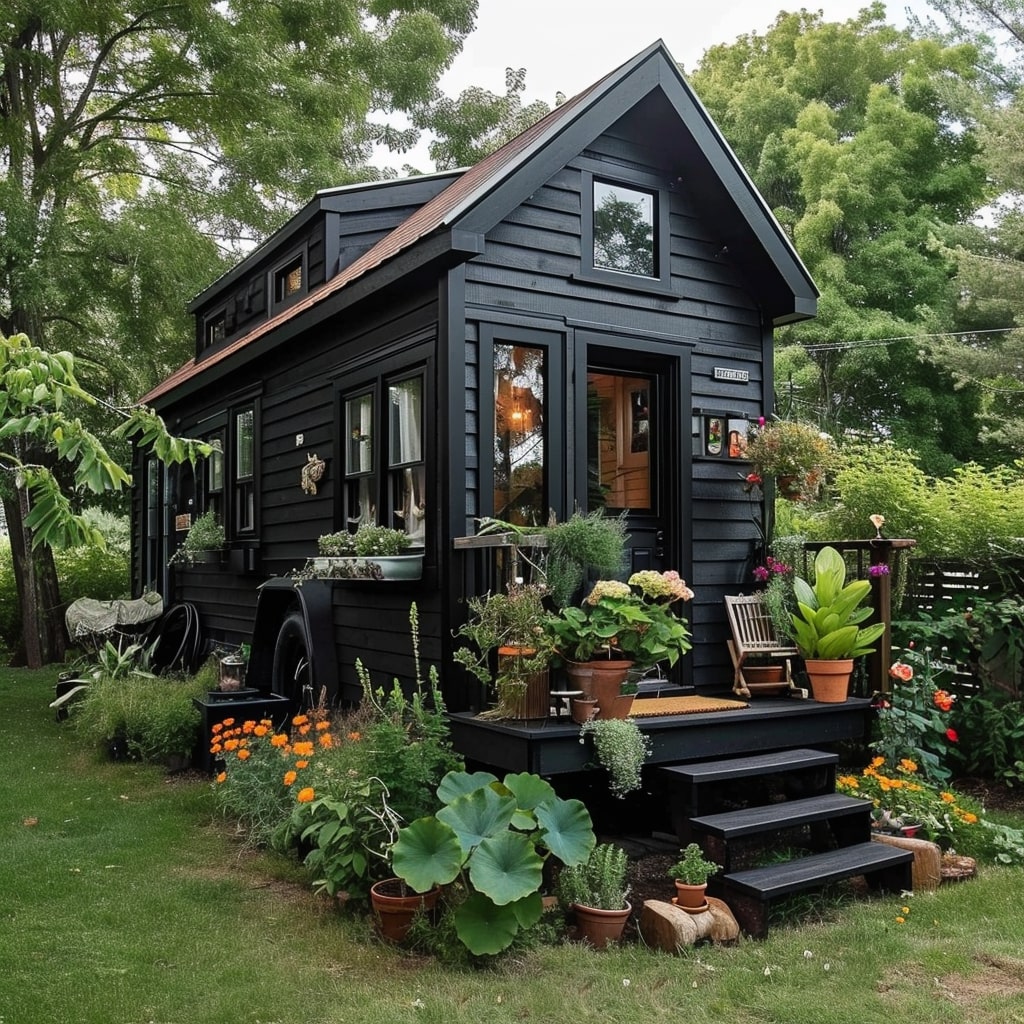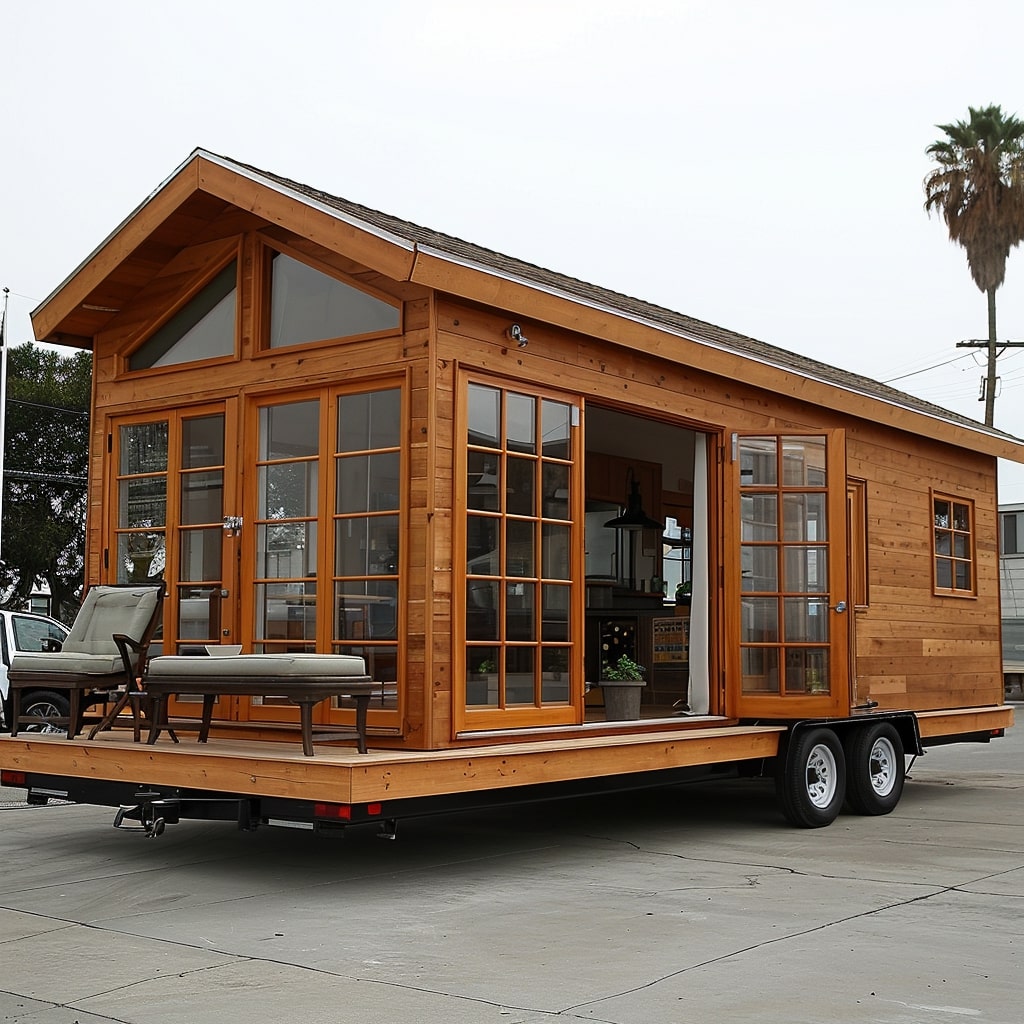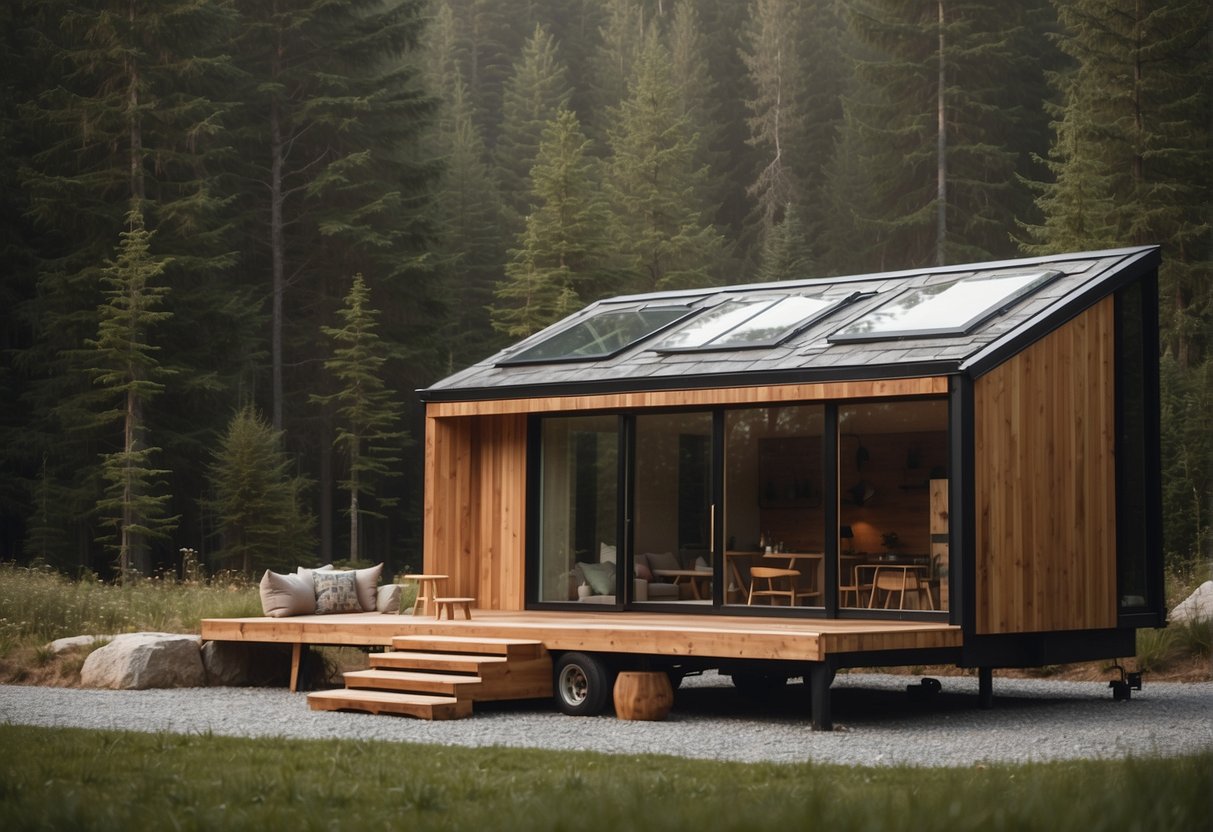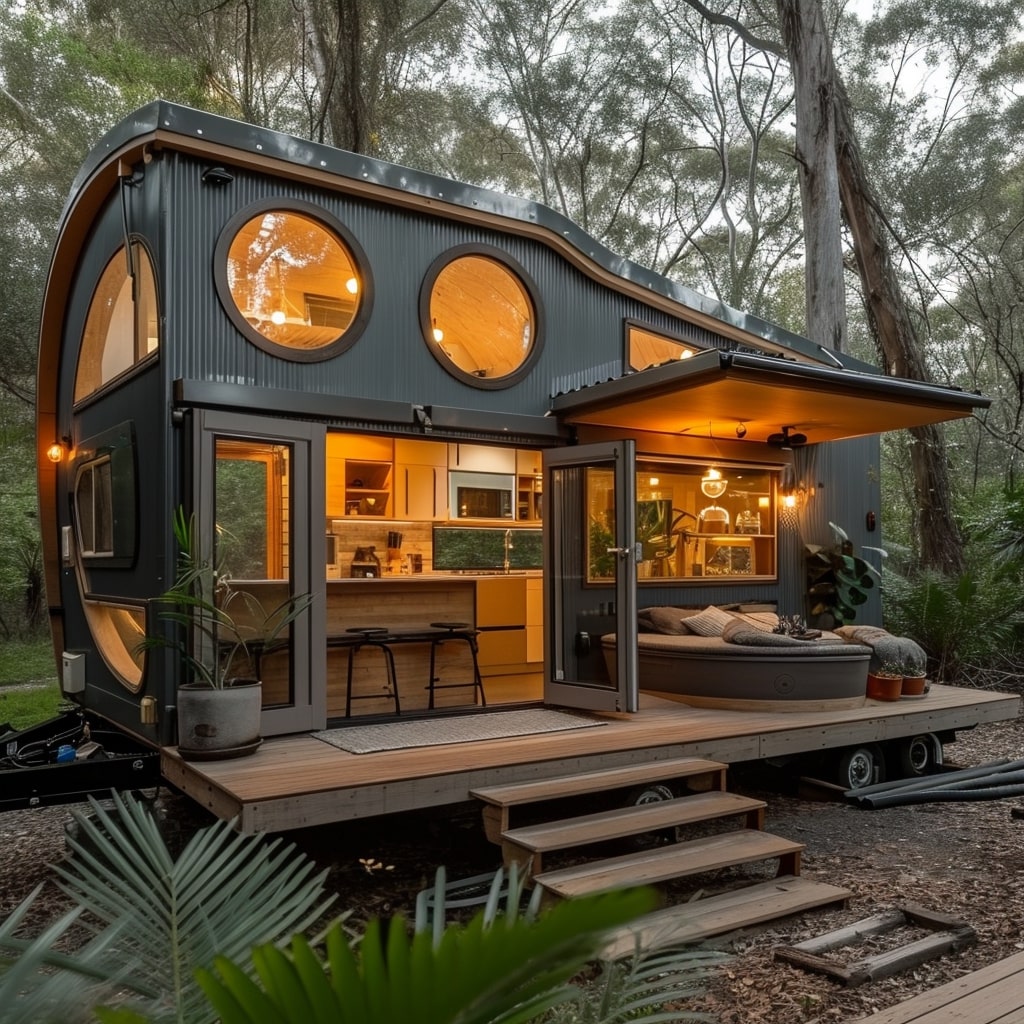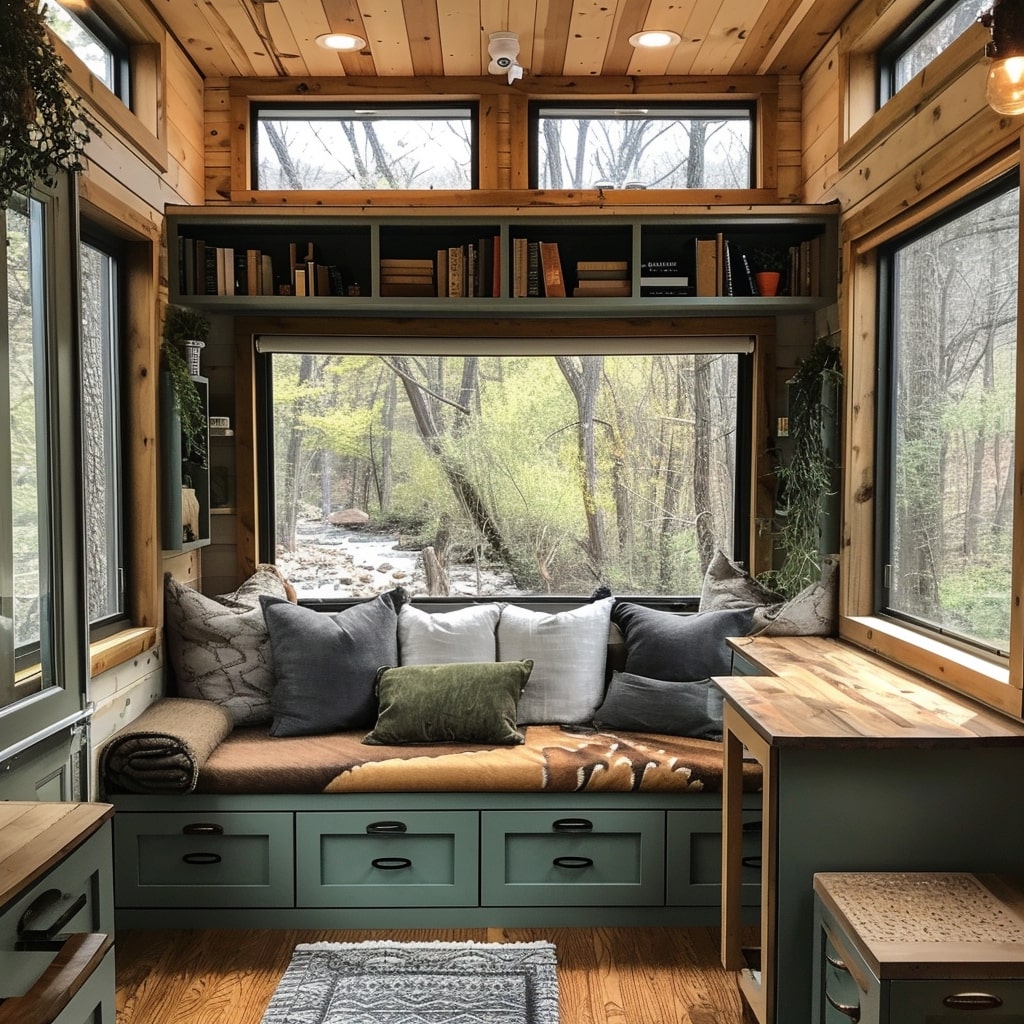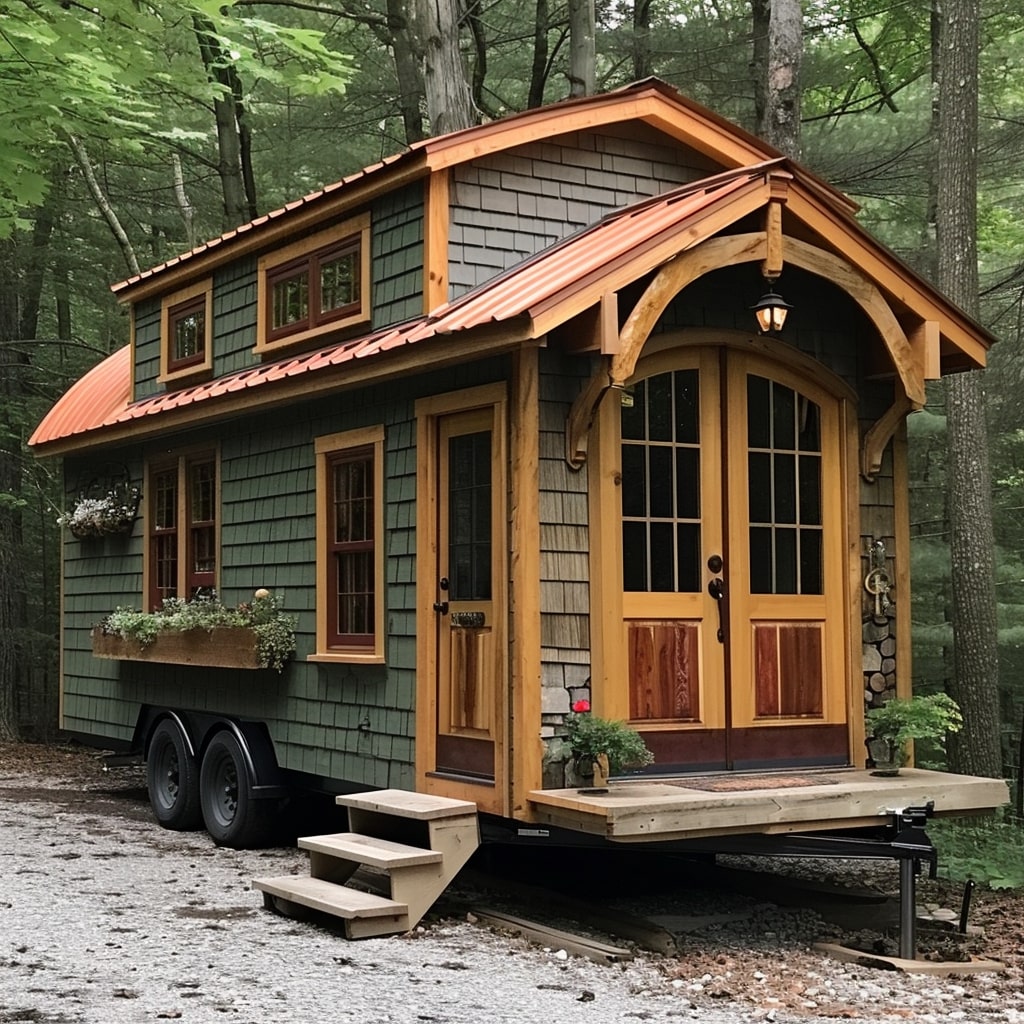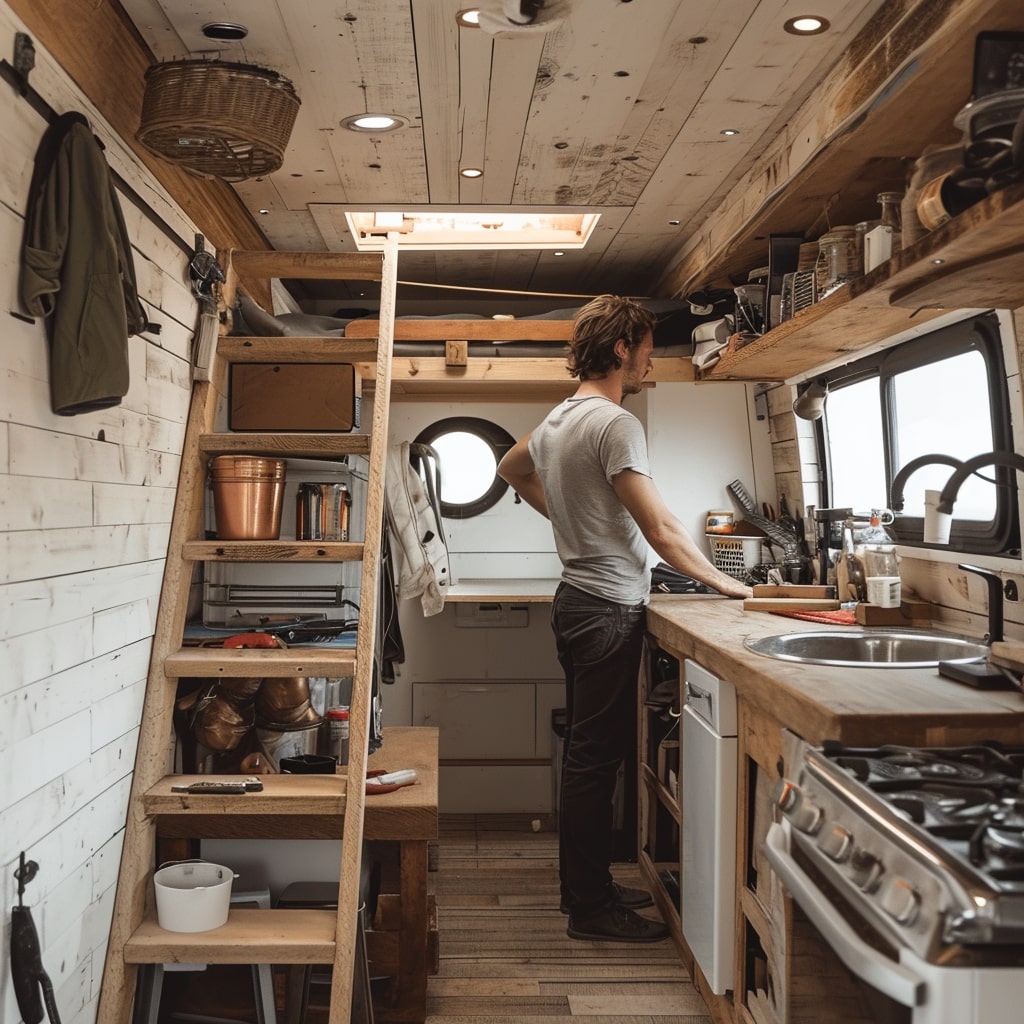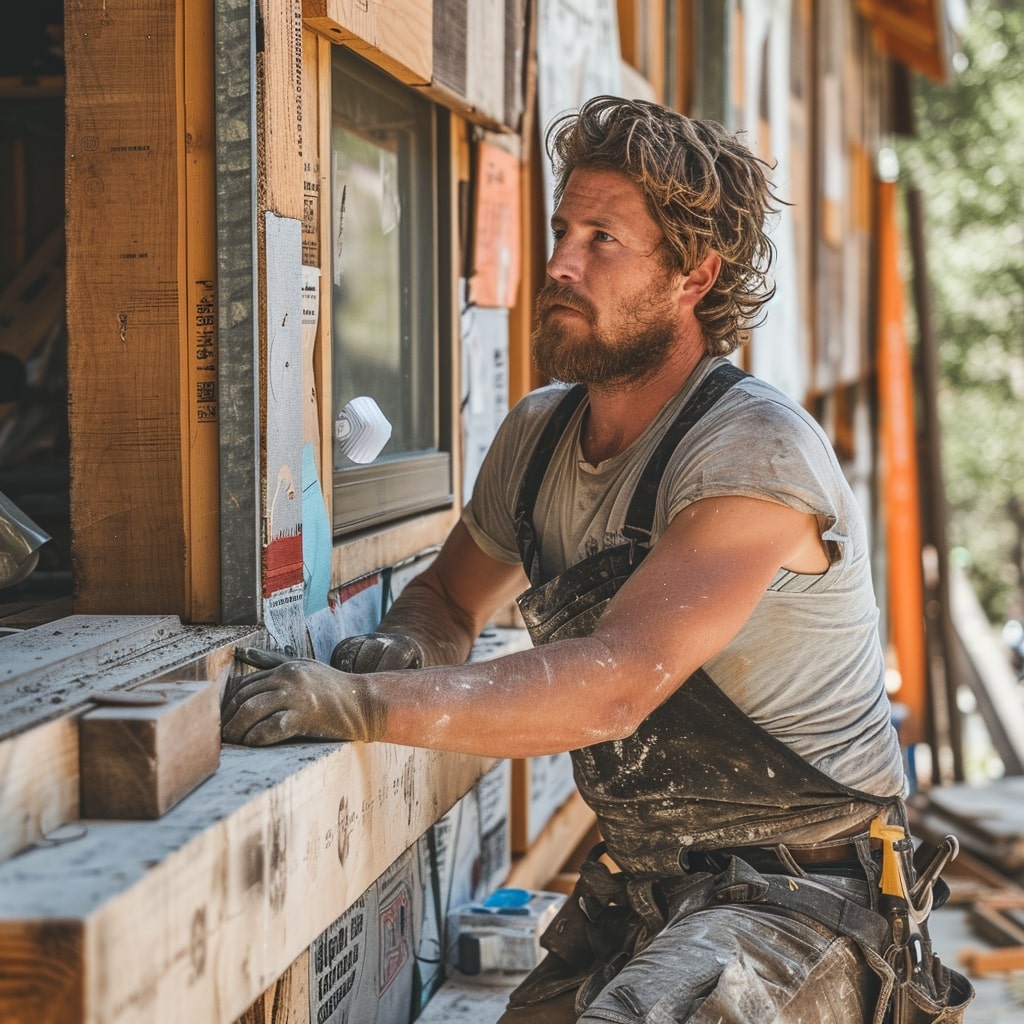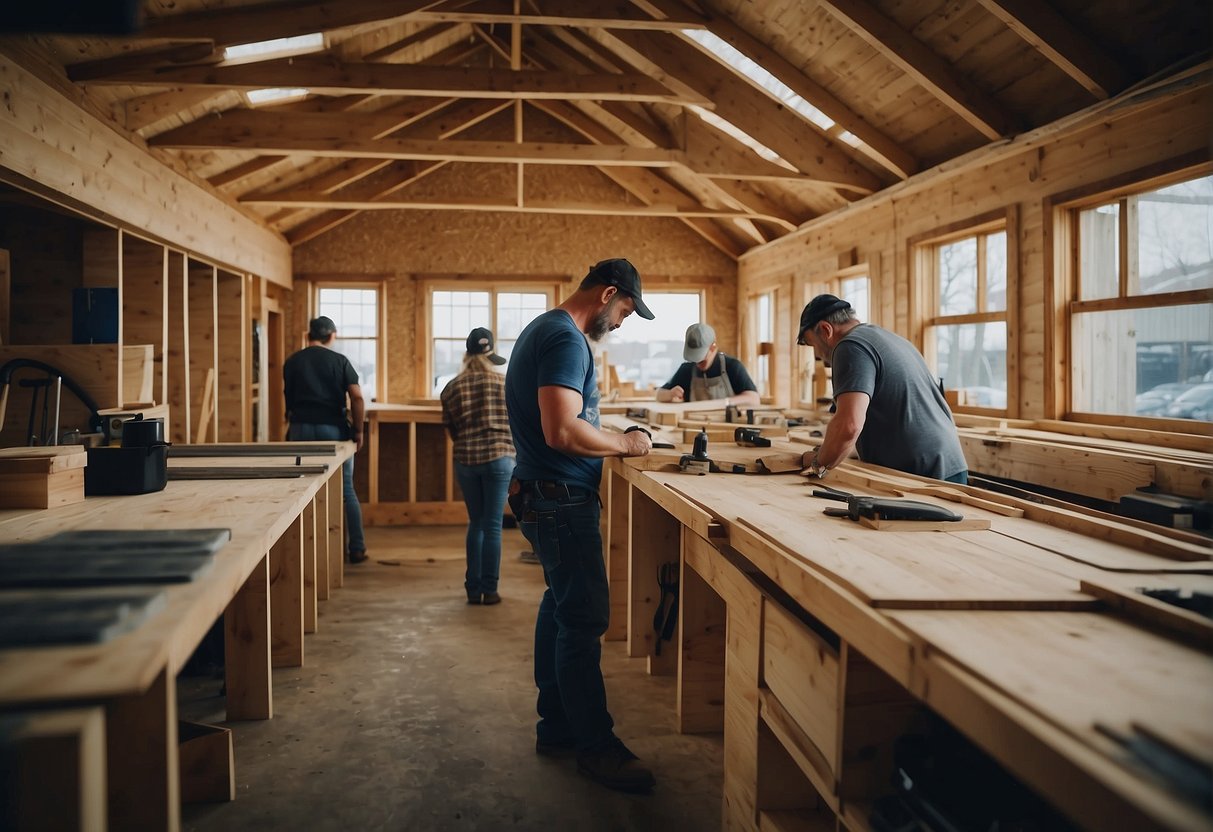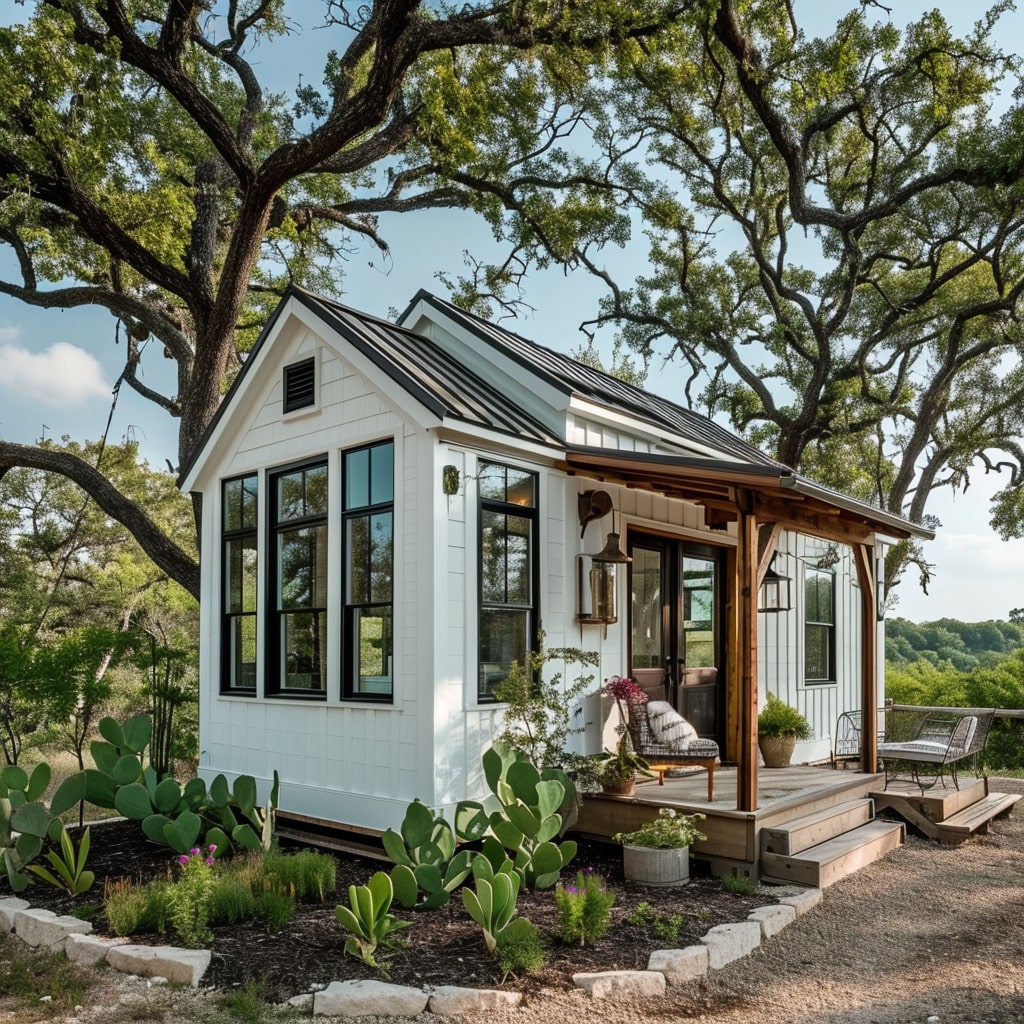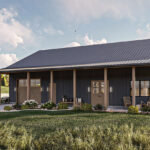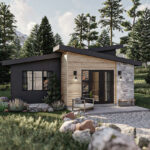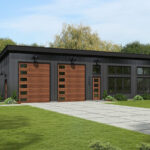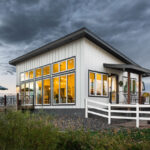Best Tiny Home Builders: Industry Leaders and Innovators
Tiny homes have emerged as a popular alternative to traditional housing, combining the benefits of reduced living expenses, environmental sustainability, and the simplicity of having a space that is both functional and concise. At the heart of the tiny home movement lie the builders who transform compact living dreams into reality. These builders must not only excel in craftsmanship but also in creating designs that maximize the use of limited space without compromising on aesthetics or the individual needs of their clients.
An impressive array of builders specializes in tiny homes, addressing a range of preferences from custom, handcrafted abodes to modular constructions that provide affordability and speed in setup. The Tumbleweed Tiny House Company stands out for their quality overall, offering various models that cater to the diverse requirements and aspirations of tiny home enthusiasts. Alternatively, for those seeking bespoke solutions, companies like Tiny Heirloom demonstrate expertise in crafting luxury custom tiny homes, tailoring each project to the unique vision of the homeowner.
The surge in demand for tiny homes has been fuelled not only by a desire to downsize but also due to the flexibility and creativity these structures afford. Efficient design is paramount, allowing for comfort, convenience, and style within the spatial constraints. Builders must constantly innovate to ensure that these diminutive dwellings are not only habitable but also offer a level of quality and personality that rivals their larger counterparts. As a result, the best tiny home builders are those who understand the ethos of the tiny home movement and can deliver a final product that resonates with the ambitions of a growing community looking to live big by living small.
Defining the Tiny Home Lifestyle
The tiny home movement espouses a philosophy of minimalism and intentional living. Advocates for tiny homes often emphasize efficiency and sustainability, focusing on the essentials of home living while reducing one’s ecological footprint.
Tiny houses typically encompass dwellings with 400 square feet of floor space or less. This restriction often excludes other potential living areas like lofts, which while providing additional space, still adhere to tiny living standards by maintaining a compact footprint.
The lifestyle associated with smaller living spaces prioritizes quality over quantity, encouraging occupants to cultivate spaces only with items that serve a purpose or bring joy. It assumes creativity in design and an innovative use of space to maximize functionality.
Sustainable practices in tiny living frequently include:
- Reduced energy consumption: Smaller spaces require less energy to heat and cool.
- Creative waste solutions: Composting toilets and greywater systems are common.
- Environmental impact: use of renewable materials and a smaller overall use of resources.
To embrace this lifestyle, potential tiny home dwellers must consider:
- The number of occupants
- Storage needs
- Lifestyle preferences
The tiny home community often share motivations such as financial freedom, the desire for a more mobile living situation, and a commitment to environmental stewardship. This community is supported by a range of builders who specialize in customizable and modular tiny homes, focusing on both aesthetic appeal and practicality to cater to the diverse needs of tiny home enthusiasts. For example, Tiny Heirloom offers custom tiny homes designed to reflect the specific desires of their clients.
Key Factors in Choosing a Builder
When selecting a tiny home builder, buyers should assess factors like craftsmanship, design flexibility, material quality, and cost efficiency. These elements are critical in ensuring a well-constructed tiny home that meets both aesthetic and functional requirements within the planned budget.
Quality and Craftsmanship
Builders renowned for high quality and craftsmanship are distinguished by their attention to detail. It is essential to choose builders that consistently produce structurally sound homes, adhering to stringent building standards. Exceptional craftsmanship is not only apparent in the finish and fittings of a home but is also integral to the dwelling’s longevity and safety. Potential homeowners are advised to review a builder’s portfolio and customer feedback to gauge the level of quality delivered.
Design and Customization
The ability to offer custom design and customization options sets apart top-tier builders. Clients may require a personalized tiny home that reflects their unique style and needs. Builders that accommodate custom homes with various design choices enable homeowners to have a significant say in the layout, aesthetics, and functionality of their living spaces.
Materials and Construction
Materials chosen for construction impact the home’s durability and environmental footprint. Builders using quality materials and sustainable building practices commit to creating homes that are not only robust but also eco-friendly. The use of innovative construction techniques and materials that are energy-efficient and recyclable is a hallmark of forward-thinking tiny home builders.
Price and Affordability
Lastly, price and affordability are crucial considerations. The price range for tiny homes can vary widely, with financing options playing a role for many purchasers. Buyers must look for builders that offer transparent pricing models and provide detailed quotes. It’s important to note that while affordability is key, it should not compromise the home’s overall quality and structural integrity.
Top Builders for Custom Tiny Homes
The market for tiny homes has expanded, with several builders now specializing in custom designs that cater to individual preferences, be it luxurious finishes or innovative space-saving features. These top builders offer diverse options for those looking to downsize without compromising on personal style or quality.
Mustard Seed Tiny Homes
Mustard Seed Tiny Homes stands out for their unique blend of modern luxury and practicality. They specialize in custom builds that reflect the homeowner’s personality and lifestyle, ensuring that each tiny house is as unique as its owner.
Tiny Heirloom
Tiny Heirloom is synonymous with luxury tiny homes on wheels, offering customers the chance to participate in the custom design process. Their dedication to quality and detail has made them an industry leader in creating bespoke tiny homes that defy expectations.
Tumbleweed Tiny House Company
The Tumbleweed Tiny House Company is celebrated for its extensive experience in constructing custom tiny homes on wheels. They offer a variety of customizable models that are both eco-friendly and designed with the homeowner’s specific needs in mind.
Custom Container Living
With an eye for innovation, Custom Container Living repurposes shipping containers into fully functional and custom tiny homes. Their approach intersects ingenuity with sustainability, pushing the boundaries of what a tiny house can be.
Rocky Mountain Tiny Houses
Rocky Mountain Tiny Houses crafts custom tiny homes that reflect a commitment to durability and functionality. They blend traditional craftsmanship with modern design, allowing for personalized tiny homes that withstand the challenges of various climates.
Unique Features and Offers
The best tiny home builders in the industry distinguish themselves with innovative features and offers that cater to diverse lifestyles and preferences. From the mobility of tiny homes on wheels to the stability of foundation-based structures and the luxury of park model homes, consumers benefit from a vast array of specialized options.
Tiny Homes on Wheels (THOW)
Builders such as Tumbleweed Tiny House Company offer tiny homes on wheels, enabling owners to enjoy the freedom of travel and change their location as desired. These mobile homes integrate modern design elements and functionality, providing a comfortable living space that can be taken almost anywhere roads permit.
Key Features:
- Mobility for regular travel
- Customizable design options
Tiny Homes on Foundations
For those seeking a permanent location, builders like Tiny Heirloom offer tiny homes on foundations. These homes are tailored for individuals who desire the tiny home lifestyle but with a fixed address. They often feature innovative storage solutions and stylish interiors that maximize the small living space.
Key Features:
- Stability and permanence
- Enhanced customization of interiors
Park Models and Vacation Getaways
The park model and vacation getaway segment cater to those looking for a tiny home experience with all the amenities of a luxurious retreat. Firms such as Mustard Seed Tiny Homes provide these larger, park model RVs with ample space and sophisticated design, perfect for vacation properties or seasonal living.
Key Features:
- Ample space with high-end amenities
- Ideal for seasonal living or holiday homes
Supporting Services and Warranties
When selecting a tiny home builder, buyers should consider the range of supporting services and warranties offered. These can dramatically affect the long-term satisfaction and security with one’s tiny home purchase.
Financing Options
Many tiny home builders, including Cornerstone Tiny Homes, recognize the unique financial requirements of purchasing a tiny home and often partner with financial institutions to offer tailored financing options. Accessibility to financing is a key service that enables prospective homeowners to transition into tiny living with less financial strain.
Customer Service and Community Engagement
Customer service is paramount in the tiny home industry, with builders like Mustard Seed Tiny Homes fostering strong relationships through continuous engagement and community involvement. Builders often host workshops, webinars, and communicate timely updates, ensuring buyers are well-informed about their tiny home and involved in a broader community of tiny home enthusiasts.
Warranties and Maintenance
Tiny homes are an investment in a simplified lifestyle, but like any home, they require upkeep. Most tiny home construction companies, including Tumbleweed Tiny House Company, offer warranties on structural elements, which typically cover a 1-year period from purchase. However, some premium builders offer extended warranties up to 10 years, covering safety, mechanics, and structural integrity, thus ensuring long-term peace of mind. Builders also often provide maintenance services or guides to assist homeowners in keeping their homes in top condition.
Design and Customization Options
When selecting a tiny home builder, potential homeowners have a myriad of design and customization options to consider. These options not only reflect aesthetic preferences but also entail strategic planning for space efficiency and environmental impact. Builders like Tiny Treasure Homes involve clients in the design process to ensure every square inch is utilized effectively.
Floor Plans and Space Efficiency
Tiny homes are known for their ingenious use of space, often necessitating a thoughtful approach to floor plan design. Builders collaborate with designers to create layouts that maximize functionality in a minimal footprint. Floor plans are tailored to the individual’s living needs, incorporating features that are both space-efficient and flexible. For example, Tumbleweed Tiny House Company offers a variety of floor plans designed for those wishing to live both comfortably and minimally.
Customization in Detail
With an emphasis on customization options, buyers can expect to make detailed selections ranging from interior finishes to built-in furniture. The attention to detail provided by companies like Tiny Heirloom ensures that each tiny home is as unique as its owner, with craftsman-quality construction reflecting personal style and needs. This level of customization permits homeowners to be part of the creative home design process, making choices that fully represent their lifestyles.
Environmental Considerations
Sustainability and green building practices are central to the ethos of many tiny home builders. By offering eco-friendly materials and energy-efficient appliances, builders like TruForm Tiny encourage homeowners to consider the environmental impact of their new tiny home. Designers focus on incorporating renewable energy sources, non-toxic materials, and innovative technologies to minimize the ecological footprint and promote sustainability.
Regulatory Considerations and Certifications
When constructing a tiny home, builders must be conscientious of regulatory standards and acquire necessary certifications to ensure safety and compliance with local and national regulations.
RVIA Certification
The Recreational Vehicle Industry Association (RVIA) offers a certification process that indicates a tiny home on wheels meets the safety standards common to RV manufacturing. Certification from the RVIA serves as a quality assurance tool for consumers and can assist in obtaining financing and insurance. Tiny homes with RVIA certification are often built to adhere to the rigorous safety standards specified by the association.
Zoning and Building Codes
Tiny homes are subject to local zoning and building codes, which vary widely from one municipality to another. Builders and residents must be aware of relevant regulations, such as minimum size requirements, which can significantly impact design and placement. Some regions have embraced tiny houses by adapting their codes, while others still operate with regulations that do not recognize tiny houses as permanent residences. The International Code Council, together with the Tiny Home Industry Association, has been influential in developing the ICC Navigating Certification and Regulation of Tiny Houses to guide compliance with these building codes and standards.
Logistics and After-Sale Support
When considering a tiny home purchase from builders like Wind River Tiny Homes or Mint Tiny House Company, potential homeowners should evaluate the logistics of shipping and delivery, as well as the level of after-sale support offered by the company. These factors can greatly influence the overall satisfaction with the purchase.
Shipping and Delivery
Wind River Tiny Homes offers detailed logistics planning to ensure a smooth delivery process. Their shipping area generally includes the continental United States, but specific arrangements can be made for deliveries outside this zone. Mindful of the unique challenges posed by transporting a tiny home, they coordinate with specialized shipping services to handle the job safely and efficiently.
Mint Tiny House Company, on the other hand, has established a reputation for delivering their custom-built homes across North America. Clients may be assured that the shipping and handling of their homes are conducted with utmost care, regardless of the final destination.
After-Sale Support
After the sale, both companies emphasize strong customer service. Wind River Tiny Homes extends comprehensive after-sale support to assist with any issues that may arise post-delivery. They provide homeowners with the necessary resources to ensure their tiny home remains in excellent condition.
Similarly, Mint Tiny House Company takes pride in their after-sale services, which includes a straightforward warranty claim process. They are dedicated to resolving any construction or manufacturing concerns, demonstrating a commitment to their customers’ long-term satisfaction with their new homes.
Spotlight on Notable Builders
In the realm of tiny home construction, certain builders stand out for their innovation and quality. These companies have garnered reputations for excellence in design and craftsmanship, often offering tours that showcase their unique approaches to tiny living.
Oregon Cottage Company
Oregon Cottage Company, a key player based in the Pacific Northwest, pioneers in blending traditional architectural designs with modern sustainability. They emphasize custom-built homes tailored to individual lifestyles.
Green River Log Cabins
For those drawn to a more rustic aesthetic, Green River Log Cabins specializes in log cabin construction, offering robust and energy-efficient homes built with quality craftsmanship in South Carolina.
Wheelhaus
Wheelhaus brings a touch of luxury to tiny living with their modern designs that feature high-end finishes. Their commitment to durability and functionality stands at the forefront of their innovation, offering homes that are as sturdy as they are stylish.
Wind River Tiny Homes
Creativity is the cornerstone of Wind River Tiny Homes, where each project is treated as a unique piece of art. Based in Chattanooga, Tennessee, they push the envelope in tiny home construction with custom designs that reflect the homeowner’s individuality.
Mint Tiny House Company
Canada’s Mint Tiny House Company has made waves in the industry with their versatile floor plans and off-grid options. Their attention to detail and use of space-saving techniques exemplify their innovative spirit in tiny home design.
Resources for Aspiring Tiny Home Owners
For those looking to join the tiny home movement, selecting the right resources is crucial. This includes knowing where to find comprehensive guidance, quality supplies, educational opportunities, and staying informed on the latest developments in tiny home living.
Building a Tiny Home: A Step-by-Step Guide
Building a tiny home requires detailed planning and execution. Guides such as The Best Tiny Home Builders of 2024 – Picks by Bob Vila offer crucial insights on selecting reputable builders and understanding important factors in the construction process. A methodical approach to design and construction is key to successfully building a tiny home.
Suppliers and Manufacturers
Identifying reliable suppliers and manufacturers is essential for finding materials that blend quality with modern design. Companies like Tumbleweed Tiny House Company are renowned for their craftsmanship, providing a range of options for those seeking a custom-built Tiny House with contemporary amenities.
Workshops and Educational Material
Workshops and educational materials are indispensable for those looking to gain hands-on experience and in-depth knowledge. Resources such as the Tiny House Blog help enthusiasts learn about various methodologies in tiny home construction, allowing them to make informed decisions throughout their building journey.
Latest News and Updates
Staying up-to-date with the latest news and updates is vital for anyone involved in the tiny home movement. Platforms like NewHomeSource provide current information on legislations, trends in tiny home living, and advancements in sustainable building practices. This ensures homeowners are well-informed about the evolving tiny home landscape.
Conclusions and Future Trends
In the landscape of tiny living, sustainability and innovation continue to be the cornerstone of the tiny home movement’s evolution. The implications are not merely confined to individual residences but expand into the broader community impact and housing stewardship.
The Future of Tiny Homes
The trajectory of tiny homes suggests a growing acceptance and adoption, with an increase in individuals seeking a minimalist lifestyle. While affordability has been a strong motivator, a significant drive now is the interest in reducing carbon footprints. The industry is seeing a shift toward net-zero and off-grid tiny homes, powered by advancements in solar energy and sustainable materials.
Advancements in Tiny Home Design
Design ingenuity in tiny homes is flourishing with a focus on creative home design that maximizes space utilization. Innovations such as multi-functional furniture and the integration of smart home technology are becoming standard. Additionally, construction methods are evolving to include new materials that are not only eco-friendly but also increase the durability and efficiency of tiny homes.
Community and Social Impact
Tiny home developments are creating a new layer in housing options, with Accessory Dwelling Units (ADUs) gaining popularity in urban settings. These units add value to existing properties and cater to the densification of cities while preserving community ties. The stewardship of such movements underscores a collective push for affordable and sustainable living, reflecting a shift in social consciousness toward more communal and connected living environments.
